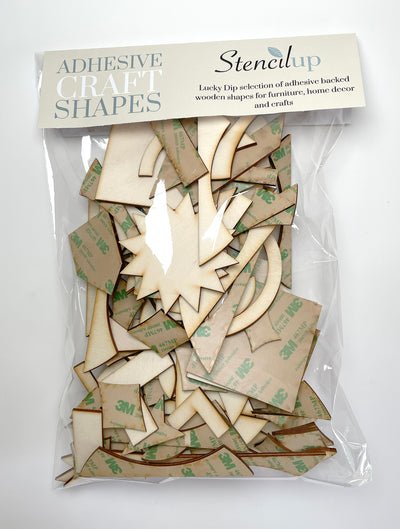How to...
Stenciling tips & techniques
PREPARATIONStencilling works best on a smooth flat surface, so take time to prepare your walls by repairing cracks and sanding down any raised areas. Make sure your stencil is flat before using it, so leave unrolled for a few hours, weighted down to ensure it is flat.
Have all your equipment at hand:
- pencil
- small roller and tray and/or stencil brushes
- low-tack spray adhesive (unless you have opted for Peel &Stick)
- water-based paint
- spirit level
- paper towels and wipes (preferably lint-free)
- rollers / stencil brushes
Dense foam rollers are by far the quickest and easiest way to stencil. But it is also useful to have a couple of stencil brushes for the smaller, more detailed areas and shading effects. Stencil brushes are flat-tipped with bristles of one length and can usually be found at art & craft stores. Flat-tipped make-up brushes are perfect for small details when using our peel & stick stencils.
POSITIONING YOUR STENCIL
ALWAYS TEST YOUR STENCIL ON A SHEET OF LINING PAPER FIRST!
It is important to practice application before you begin so you know the amount of paint and pressure to use to obtain the desired results. Lining paper is perfect for this, although any large sheet of paper will do. If you want your corners to match begin in the middle of the wall and work out towards the edges. Use a plumb line or level to ensure your first length of stencilling is plumb and straight. We advise the use of low tack spray adhesive to fix your stencil to the wall. It will leave no marks but ensures all areas of the stencil are secure to minimise bleeding. Masking tape can be used to further secure the edges or to mask of areas of the stencil if you are using multiple colours. Allow a few seconds after applying the spray adhesive before you fix to the wall. You do not need to apply adhesive every time you move the stencil, only when the tack begins to lessen. Use the overlay guide (overleaf) to position your stencil for a seamless pattern.
APPLYING PAINT
A small paint tray or a saucer as ideal as a palette for your paints. Pour a small amount of paint. Roll your roller in the paint and then roll off excess paint onto a paper towel. You only need a small amount of paint on the roller or brush as stencilling is a ‘dry’ brush/roller technique. Build up your colour gradually rather than one thick coat. If you are using a roller work in the direction of the longest part of the stencil. Roll firmly until the desired level of paint coverage has been achieved. If you are using a brush simply tap the paint on, a method called stipling.
CLEANING YOUR STENCIL
Our stencils are cut from mylar a very durable material. You can use soapy water to gently clean the front of the stencil with a washing up brush. Alternatively baby wipes also work very well! Place your stencil on some paper and work from the outside of the design inwards to protect the edges of the stencil. If you have used spray adhesive you can simply re-wrap you stencil in the waxed paper that it was shipped in, or use rubbing alcohol or lighter fluid to remove the adhesive. If you have used water based paints simple clean up your roller and brushes with soapy water.
COMMON MISTAKES
- Overloading your brush. Using your brush or roller ‘too wet’ can result in bleeding where the paint seeps behind the stencil. This will result in a smudged appearance rather than crisp lines. It is better to use minimal paint and build up the colour gradually. If you do have areas that have smudged use a fine paint brush to ‘touch up’.
- Stencil movement. Movement of your stencil can result in ‘ghost’ images. Using spray adhesive ensures all areas of your stencil are in place. Use masking tape at the top, bottom and sides to further secure your stencil.
- ‘Lifting' Be careful not to lift the stencil and apply paint underneath. If stippling hold your brush straight so the bristles cannot lift the stencil
- Paint residue. Every so often check the back of your stencil to make sure there is no paint residue that could be transfered.
YOUR FINISHED PROJECT
Your stencilled project will give you an immense sense of satisfaction and attract the admiration of your guests! Remember the goal is not to create a perfect repetitive design as you would achieve with wallpaper, rather it is an individual result with subtle differences in shading resulting in a wall that is more ‘alive’ and interesting. Good luck and we would of course love to see photos of the finished project!


